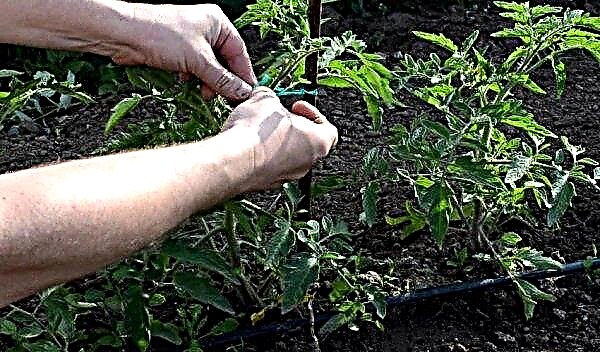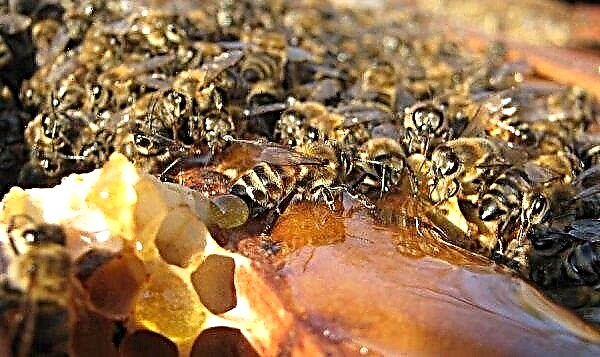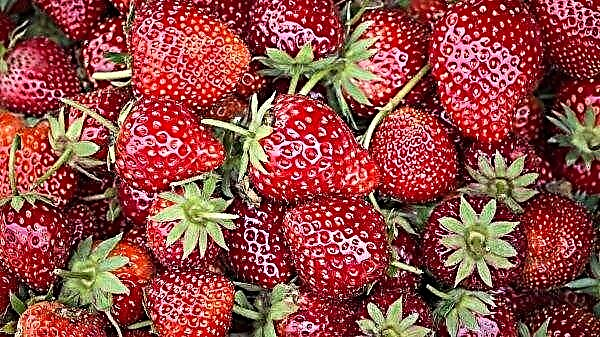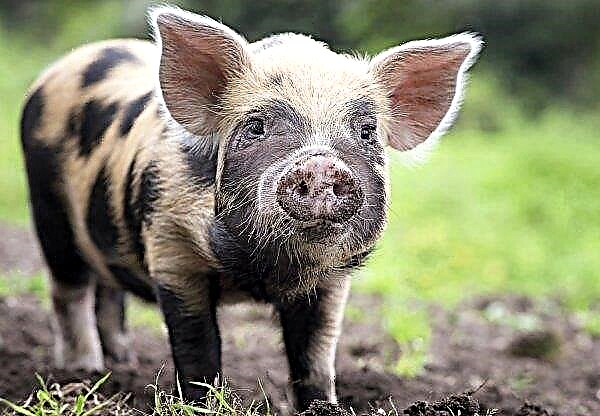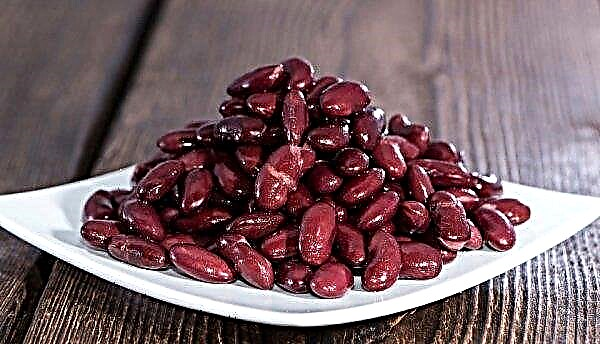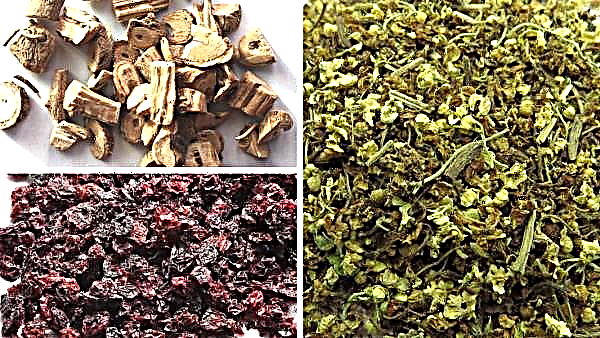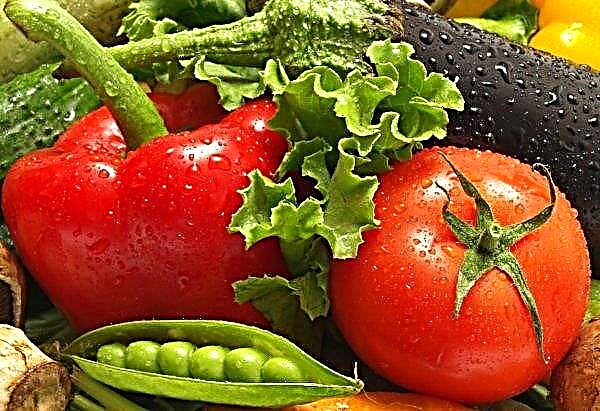Every farmer is faced with various cattle diseases. Some are easy to diagnose, while others, on the contrary, are difficult to diagnose. Diseases can occur from mild ailment and can be fatal. Today we will talk about clostridiosis, which has not been given due attention for a long time.
What is clostridiosis
 Clostridiosis is an infectious disease in cattle. In addition to this group of domestic animals, its outbreaks are recorded in birds and pigs. It is caused by the anaerobic bacterium Clostridium. It is resistant to many environmental factors and disinfectants. So, the bacterium can survive at sub-zero temperatures, lack of oxygen, heat. Especially good for its propagation is a moist, oxygen-free medium at a temperature of about thirty-five degrees of heat. Clostridia spores are coated, which protects them from external factors.
Clostridiosis is an infectious disease in cattle. In addition to this group of domestic animals, its outbreaks are recorded in birds and pigs. It is caused by the anaerobic bacterium Clostridium. It is resistant to many environmental factors and disinfectants. So, the bacterium can survive at sub-zero temperatures, lack of oxygen, heat. Especially good for its propagation is a moist, oxygen-free medium at a temperature of about thirty-five degrees of heat. Clostridia spores are coated, which protects them from external factors.
Once in the body of the animal, this shell is destroyed and bacteria begin to secrete very strong toxins. They affect the stomach and intestines, causing necrotic enteritis, as well as the liver, kidneys, nervous, and muscular systems. Clostridia cause animal diseases, namely enterotoxemia, tetanus, malignant edema, emkar, botulism. They can enter the livestock body orally and through wounds on the body. The main transmission mechanism is oral-fecal. After infection, a fatal outcome is possible after a short period of time.
Important! TOyoung calves up to four months of age are particularly susceptible to lostridiosis. Their disease is very fast and the mortality rate is high. Farmers should pay particular attention to this category of animals.
Reasons for the appearance
Clostridiosis can affect cattle for the following reasons:
- feeding animals with poor-quality food and one that contains antibiotics. The latter greatly destroys the immune system of the cow and they are more susceptible to various diseases;
- soil contaminated with bacteria, water;
- dirty stable, unsanitary conditions of keeping livestock.

Clinical signs
Symptoms of the disease vary depending on how it got into the body and what disease the bacteria caused. If the bacterium gets through the oral-fecal route, then at first there is a general malaise of livestock, and after that, toxins begin to destroy the gastrointestinal tract, nervous system and other organs. With malignant edema, subcutaneous tissue can be affected, cold swelling with foamy exudate is formed, a crunch is felt when palpating, and the heart rate rises. Symptoms are similar with emcar.
If the animal is infected with botulism, then there may be a violation of the swallowing act, water is released through the nostrils, diarrhea, salivation occurs. With enterotoxemia, body temperature rises, coordination of movements is disturbed, the animal moves poorly, muscle cramps are observed, the respiratory reflex worsens, stool becomes loose, sometimes with blood. With tetanus, paralysis, cramps, profuse sweat, muscle hardness can occur.
With tetanus, paralysis, cramps, profuse sweat, muscle hardness can occur.
Did you know? Scientists have proven that cows feel the magnetic field of the earth and therefore are located along its lines during food and rest.
Diagnostics
Final diagnosis of clostridiosis is possible only in laboratory conditions. For this, the necessary biomaterial is sent for research. In different cases, this may be blood, pieces of affected tissue, intestinal contents, wounds.
Pathological changes
Depending on the type of disease caused by clostridium, various changes in organs and tissues are recorded. Bloating, inflammation in the subcutaneous tissue and muscles may occur, cracking is felt when pressed, foamy exudate is released from the tissues. With enterotoxemia, in particular, internal organs are affected, namely, aqueous humor accumulates in the abdominal cavity, the walls of the intestine thicken, the lymph nodes increase, and hemorrhages in the liver, kidneys, and mucous membranes are visible. With botulism and tetanus, the blood is thick and dark, and the muscles in color resemble boiled meat.
With enterotoxemia, in particular, internal organs are affected, namely, aqueous humor accumulates in the abdominal cavity, the walls of the intestine thicken, the lymph nodes increase, and hemorrhages in the liver, kidneys, and mucous membranes are visible. With botulism and tetanus, the blood is thick and dark, and the muscles in color resemble boiled meat.
Treatment
If the body of cattle is affected by clostrida, then after diagnosis, complex therapy is needed, which depends on the acquired disease.
Important! With any, especially massive, malaise of livestock, you must immediately call a veterinarian and then carry out the necessary studies. Early treatment significantly reduces the development of diseases in acute forms and mortality.
General recommendations
At the very beginning, the diseased animal must be isolated from the rest of the livestock. It must be placed in a separate stall and create the most comfortable conditions of detention. The animal should not irritate anything, there should be an acceptable room temperature, clean, dry litter and specific food of good quality. At first, namely, until forty-eight hours, food should not be given, and after small amounts, easily digestible food should be administered. Water should always be in sufficient quantity.
It is necessary to wash the stomach of the animal with the help of enemas, give astringents, probiotics.  Mandatory disinfection of the room with the help of agents that are active against clostridia. These are, as a rule, drugs that contain chlorine, bromine, iodine and are called galenic.
Mandatory disinfection of the room with the help of agents that are active against clostridia. These are, as a rule, drugs that contain chlorine, bromine, iodine and are called galenic.
Antibiotics
Without antibiotics in the treatment of clostridiosis can not do. The most effective is the penicillin group, metronidazole and its derivatives. In general, antimicrobial therapy may include drugs such as ampicillin, amoxicillin, chlortetracycline, biomycin, bicillin 5, sulfadimethoxin.
Clostridiosis vaccine
Several vaccines have also been developed that form the animal's resistance to diseases that cause clostridia. Twenty-one days after vaccination in animals, an immune response to the disease is formed. Vaccines are produced by different manufacturers and, as a rule, contain antigens of several of the most significant causative agents of clostridiosis. It is recommended to vaccinate all livestock, except for heifers in the last month of pregnancy and other animals with rhinestones after castration surgery. A single dose of the vaccine is administered according to the instructions according to the age and weight of the animal, and revaccination is recommended after ten days.
It is recommended to vaccinate all livestock, except for heifers in the last month of pregnancy and other animals with rhinestones after castration surgery. A single dose of the vaccine is administered according to the instructions according to the age and weight of the animal, and revaccination is recommended after ten days.
Did you know? A gram of cow’s rumen contains about ten billion bacteria and a million ciliates.
Other preventive measures
The disease is easier to prevent than to treat, so in order to avoid clostridiosis, a number of measures should be taken, namely:
- comply with sanitary and hygienic standards for keeping animals;
- regularly clean hooves;
- not to graze cattle near cattle burial grounds and places of death of animals;
- carry out regular disinfection of cribs;
- Do not use low-quality feed;
- when carrying out any veterinary measures, observe the rules of asepsis.
 When keeping cows and other cattle, it is necessary to monitor their health. It is necessary to observe basic hygiene in the stable and in the territories adjacent to it. This will reduce the likelihood of infectious and other diseases. Correct and timely diagnosis of animals is also important if you have any doubts about their health.
When keeping cows and other cattle, it is necessary to monitor their health. It is necessary to observe basic hygiene in the stable and in the territories adjacent to it. This will reduce the likelihood of infectious and other diseases. Correct and timely diagnosis of animals is also important if you have any doubts about their health.

